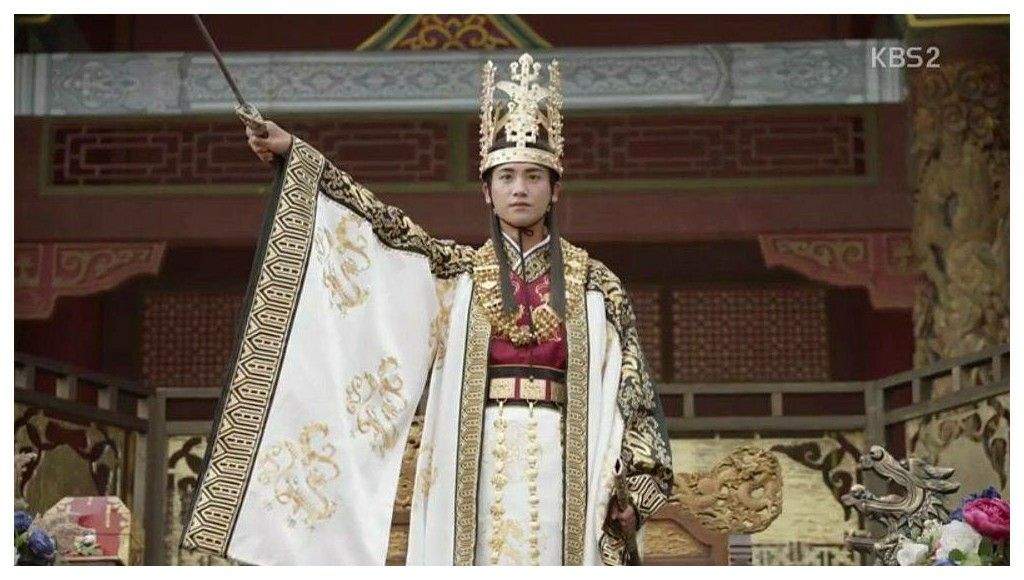I thought, since it is quite prominent in my story, that i would delve into the Korean Silla Dynasty's bone rank system to get a clear understanding of just what it means. The Bone Rank System, so called because it was based on a person’s hereditary bloodline, was introduced as part of a new law in 520 CE by king Beophung. However, GolPum system was technically abolished with the fall of Unified Silla in 935.

This is the simplest diagram I could find which explained the kind of standing that people had, and how it corroborated with their title.
 First of, a Sunggol or 'Sacred Bone' They have to be directly related to royalty on BOTH sides of their parents. Up until King Muyeol, only a Sunggol could ascend to the throne. It was due to the lack of an adequate male Sunggol which made it possible for both Queen Seon Duk and Queen Jindeok to ascend to the throne. They were the last of the Sunggols.
First of, a Sunggol or 'Sacred Bone' They have to be directly related to royalty on BOTH sides of their parents. Up until King Muyeol, only a Sunggol could ascend to the throne. It was due to the lack of an adequate male Sunggol which made it possible for both Queen Seon Duk and Queen Jindeok to ascend to the throne. They were the last of the Sunggols.
Jingol 진골 also known as “True Bone” refers to someone who was directly related to royalty, but only on ONE side of their parents.
Next down is head ranks, ranging from 6-1. 6 Being the highest, members of the head rank six could rise to the position of vice-minister. Members of head ranks four and five could rise only to minor posts. Members of head rank five could reach the tenth level of office rank only. Members of head ranks four and five could rise only to minor posts. Members of head rank five could reach the tenth level of office rank. There where seventeen levels of office rank existed altogether, 1 being the highest. Head ranks 1-3 don't 'officially' exist, but refer to the peasants and farmers that existed outside of the main city.
 The different ranks could be distinguished via the colours of their robes. If you belonged to one rank, you could not under any circumstance wear the colour of another.
The different ranks could be distinguished via the colours of their robes. If you belonged to one rank, you could not under any circumstance wear the colour of another.
Due to this system being practised so early in history there isn't much primary source material, especially material that is available in English. I had to do quite a few hours of research just to find this information, and enough to understand what the structure was about.
I plan to use either a similar structure based of what i have researched, or a newly invented one which skirts around the edges of the Silla's dynasty's practised hierarchical structure.
This is the simplest diagram I could find which explained the kind of standing that people had, and how it corroborated with their title.
 First of, a Sunggol or 'Sacred Bone' They have to be directly related to royalty on BOTH sides of their parents. Up until King Muyeol, only a Sunggol could ascend to the throne. It was due to the lack of an adequate male Sunggol which made it possible for both Queen Seon Duk and Queen Jindeok to ascend to the throne. They were the last of the Sunggols.
First of, a Sunggol or 'Sacred Bone' They have to be directly related to royalty on BOTH sides of their parents. Up until King Muyeol, only a Sunggol could ascend to the throne. It was due to the lack of an adequate male Sunggol which made it possible for both Queen Seon Duk and Queen Jindeok to ascend to the throne. They were the last of the Sunggols.Jingol 진골 also known as “True Bone” refers to someone who was directly related to royalty, but only on ONE side of their parents.
Next down is head ranks, ranging from 6-1. 6 Being the highest, members of the head rank six could rise to the position of vice-minister. Members of head ranks four and five could rise only to minor posts. Members of head rank five could reach the tenth level of office rank only. Members of head ranks four and five could rise only to minor posts. Members of head rank five could reach the tenth level of office rank. There where seventeen levels of office rank existed altogether, 1 being the highest. Head ranks 1-3 don't 'officially' exist, but refer to the peasants and farmers that existed outside of the main city.
Due to this system being practised so early in history there isn't much primary source material, especially material that is available in English. I had to do quite a few hours of research just to find this information, and enough to understand what the structure was about.
I plan to use either a similar structure based of what i have researched, or a newly invented one which skirts around the edges of the Silla's dynasty's practised hierarchical structure.
Comments
Post a Comment